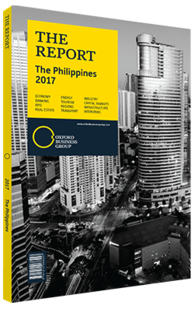Emmanuel F Piñol, Secretary, Department of Agriculture: Interview

Interview: Emmanuel F Piñol
How can the Philippines’ rice self-sufficiency goals be attained? What interventions would need to be in place to strengthen food security?
EMMANUEL F PIÑOL: The average Filipino rice farmer has a yield of 4 tonnes per ha per harvest and a production cost of P12 ($0.25) per kg produced, which are very uncompetitive numbers compared to Vietnam’s 7 tonnes per ha and production cost of P6 ($0.13) per kg.
If we analyse the practices of successful Filipino farmers who have managed to reach yields and production costs that are comparable to – or more competitive than – Vietnam’s, they performed several interventions that contributed to their improved production. These include the use of hybrid seeds and modern technology, the application of sufficient fertiliser and, most importantly, sufficient water.
Currently, the Philippines is short by 1.8m tonnes of rice to be self-sufficient with its planted area of around 4.9m ha each year. The gap between our national average production yield and Vietnam’s is roughly 4 tonnes. If we could encourage farmers to use hybrid seeds instead of traditional ones and give them modern technology, and if the government could provide irrigation and encourage mechanisation, these would have a big impact on productivity and prevent the 16% post-harvest losses the industry currently faces. The country does not need to add additional planting areas; it only needs to improve productivity by implementing changes by successful farmers that increased their production by 2 tonnes per ha or more. If this improvement is achieved in only half of the 4.9m ha of rice, the shortage would be eradicated.
Self-sufficiency will never be attained through piecemeal interventions in our rice programme. The Philippines should transition away from the mindset of building mega irrigation projects that are very costly, have a very long completion period and cover a very small area. Instead, we must move towards cost-effective, faster-to-build and smaller irrigation systems.
Why is rice self-sufficiency such a high priority?
PIÑOL: Many people do not understand why the Philippine government is so focused on rice production and argue that it should instead focus on planting high-value crops, which could provide farmers higher income and enable the country to buy rice at a lower price elsewhere with the money earned.
This would be a reasonable scenario, but climate change has made everything unpredictable. In 2006 the Philippine government had the funds to import rice to meet domestic demand, but there was a shortage of supply on the world market. Only 42m tonnes of rice is traded worldwide every year and in 2006, although the Philippines had the funds to purchase rice to meet domestic needs, there was a crunch in the global market, forcing the country to pay $1600 per tonne, where normally rice would only cost $300 per tonne.
In a context of unpredictable weather patterns, whether El Niño or La Niña, rice production could be compromised in the Philippines and any of the other major rice-producing countries like Vietnam or Cambodia. The unpredictability induced by climate change – and its effect on agriculture and food supply – is a major issue that will shape the need for rice self-sufficiency.
The large focus on rice is primarily because it is the food that Filipinos want to eat most. Should the country have another number-one staple, the government focus would shift to meet that particular demand. In addition to achieving self-sufficiency, the mindset based on experiences with calamities and climate change should be geared towards creating a buffer stock that is good for six months in every community in order to guard against the threat to rice-producing areas in the Philippines being hit by calamities.
One can look at extreme cases like Venezuela, where food riots are commonplace after years of heavy reliance on their oil revenues to purchase food. Once oil prices collapsed, the lack of an agricultural sector to back them up has led to unsustainable food security.
You have reached the limit of premium articles you can view for free.
Choose from the options below to purchase print or digital editions of our Reports. You can also purchase a website subscription giving you unlimited access to all of our Reports online for 12 months.
If you have already purchased this Report or have a website subscription, please login to continue.

